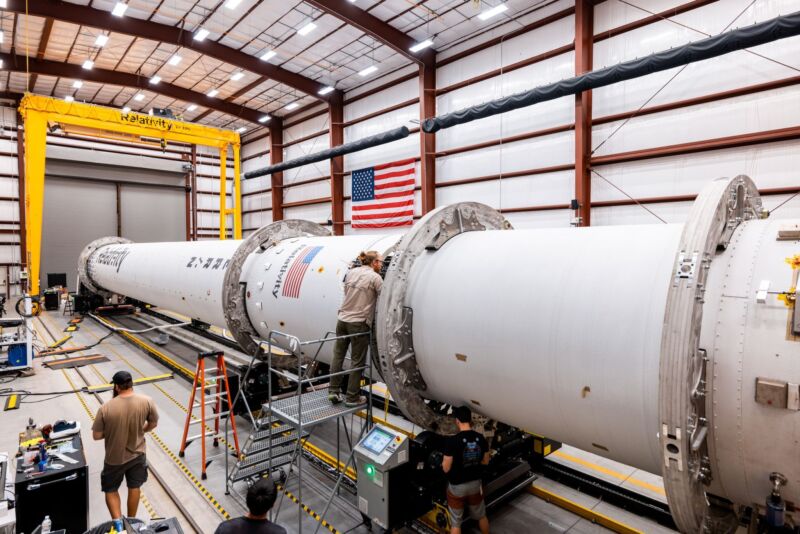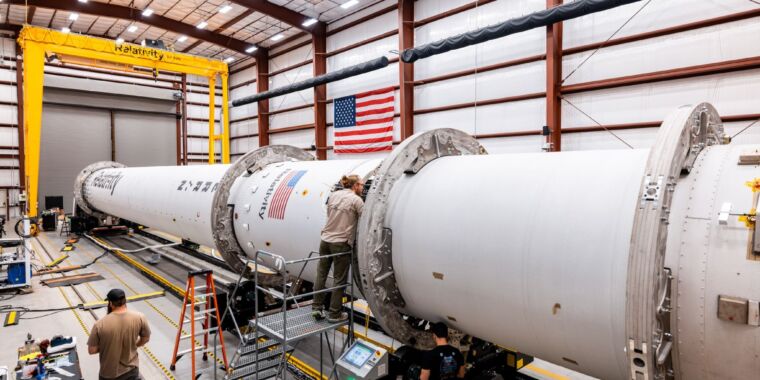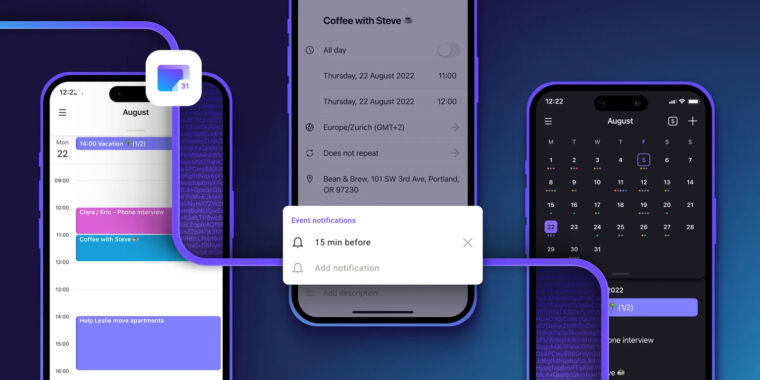
Trevor Mahlmann
Welcome to Edition 5.19 of the Rocket Report! Back from the Thanksgiving holiday, there is a lot of news to get to this week, including a report card on the SLS rocket’s performance (excellent) and some wild and woolly news from north of the US border. Read on for more.
As always, we welcome reader submissions, and if you don’t want to miss an issue, please subscribe using the box below (the form will not appear on AMP-enabled versions of the site). Each report will include information on small-, medium-, and heavy-lift rockets as well as a quick look ahead at the next three launches on the calendar.

Virgin Orbit ends security offering. The US-based launch company announced on the evening before Thanksgiving a “cessation” of a securities offering. “Due to current market conditions, the company has elected not to proceed with an offering,” Virgin Orbit said in a statement. “Any future capital raising transactions will depend upon future market conditions.” Previously, in October, Virgin Orbit CEO Dan Hart said the company was seeking to raise additional capital after going public as a special purpose acquisition company, or SPAC.
That’s not great, but … As part of the SPAC process, the company set a target to raise $483 million. However, the company only raised $228 million a year ago. Virgin Orbit has an excellent record of technical achievement, with four consecutive successes of its LauncherOne system. But there have long been questions about its financial viability, given the limited potential for growth with an air-launched rocket. This is certainly not the end of the road for Virgin Orbit, which is nearing a historic launch from Cornwall in the United Kingdom. Financially, it also has a hedge fund commitment to fall back on that is valued at $250 million.
ABL debut launch attempt is scrubbed. The first test flight of ABL Space Systems’ new small satellite launcher from Alaska has been delayed until no earlier than December after technical issues cut short a series of launch attempts in mid-November, Spaceflight Now reports. ABL conducted three countdowns during a week-long launch period at the Pacific Spaceport Complex on Kodiak Island, Alaska, to try to send aloft the company’s first RS1 rocket, which is capable of lifting 1 metric ton to low-Earth orbit.
Try again before Christmas … A November 14 launch attempt was scrubbed about 30 minutes before liftoff due to unexpected data during propellant loading on the RS1’s first stage, later found to be caused by a leaking valve in the pressurization system. A second launch attempt on November 17 was aborted at T-minus 1.8 seconds during ignition of its nine kerosene-fueled E2 first-stage engines. Another countdown on November 21 was also aborted during the engine startup sequence. That was the final launch attempt available to ABL until the company’s next series of launch dates begins on December 7. (submitted by EllPeaTea)
Electron picks up TROPICS launch contract. NASA said it selected Rocket Lab to provide the launch service for the agency’s Time-Resolved Observations of Precipitation Structure and Storm Intensity with a Constellation of Smallsats, or TROPICS, mission. Rocket Lab will launch four CubeSats for NASA on two Electron rockets, targeted for no earlier than May 1.
Ready to go for next year … This timeframe will enable NASA to provide observations during the 2023 Atlantic hurricane season, which begins June 1. The TROPICS constellation targets the formation and evolution of tropical cyclones, including hurricanes, and will provide rapidly updating observations of storm intensity. The launch of the first two TROPICS satellites, earlier this year on an Astra rocket, failed. (submitted by EllPeaTea and Ken the Bin)
Skyroot makes successful suborbital debut. Skyroot Aerospace successfully launched its small suborbital Vikram-S rocket on November 18, TechCrunch reports. The 6-meter-tall rocket reached an altitude of 89.5 km, as planned by the company, officials with the Indian startup said. The company is part of India’s nascent commercial space sector.
Orbit up next … Founded in 2018 by former ISRO scientists Pawan Kumar Chandana and Naga Bharath Daka, Skyroot has raised $68 million in total, including $51 million in a Series B round led by Singapore-based GIC in September. It has plans to develop a series of increasingly capable orbital “Vikram” rockets in the coming years. (submitted by Ken the Bin)
Relativity completes Terran 1 stacking. The company said it has successfully mated the first and second stages of the Terran 1 rocket ahead of a debut launch. “The next time Terran 1 is out on the pad, it will be stacked and vertical. Upcoming milestones to track: rollout, static fire, and launch,” the company said in its newsletter. The company also said it completed thrust vector control testing.
Slipping into the new year … Given that Relativity has yet to roll the Terran 1 out to the pad for its static fire test, it looks increasingly unlikely that the rocket will make its debut in 2022. However, the company is in good position to test its additively manufactured rocket early in 2023, perhaps even in January.
Phantom Space gets a NASA launch contract. Phantom Space—yes, the Phantom Space co-founded by Jim Cantrell—has received a “task order” from NASA to launch four CubeSats on the company’s Daytona rocket. The CubeSats will launch no earlier than 2024, NASA said, as part of the agency’s Venture-class Acquisition of Dedicated and Rideshare (VADR) program. This is NASA’s program to on-ramp a greater diversity of US rockets for government launch contracts.
Tolerating some higher risks … NASA will not launch any high-value satellites through VADR, which the agency says allows it to procure “commercial launch services for payloads that can tolerate higher risk.” There are currently 13 companies eligible to bid on VADR launch contracts, including established firms such as SpaceX and ULA, and less-established firms such as L2 Solutions in Houston. It will be interesting to see if Phantom Space can succeed in lofting the CubeSats for NASA. (submitted by Ken the Bin)
Australian launch facility raises environmental concerns. Conservationists say planned rocket launches on the Eyre Peninsula in South Australia pose an extinction-level threat to the wren, one of Australia’s smallest birds, The Guardian reports. The subspecies of southern emu-wren at the site is listed as endangered under existing law but as vulnerable nationally. Australia’s environment minister, Tanya Plibersek, is considering lifting the national status to endangered. That change would matter for project approvals and funding decisions for the Southern Launch spaceport.
Regulatory approval is pending … The Nature Conservation Society of SA says land clearance, disturbance by humans, including noise, vibrations and cars, as well as an increased risk of bushfire, put the bird at extreme risk. The Southern Launch chief executive, Lloyd Damp, said the company had engaged “pre-eminent independent experts” as part of its environmental impact statement. “The outcomes show we will have a very positive effect on their habitat through environmental management such as feral animal eradication programs,” he said. (submitted by Onychomys)
This Canadian company has ambitions, baby! I confess to not having heard of Edmonton-based Space Engine Systems until a spaceQ story crossed my desk this week. There’s a lot going on here, but if I may try to summarize, the company is working on a) a single-stage-to-orbit space plane, b) a hypersonic vehicle for point-to-point transport of body organs for medical transplants, c) a Moon-capable spacecraft, and d) a hypersonic drone named “Sexbomb” for defense applications.
That’s a full plate … Like I said, a lot is happening here. And it’s difficult to divine whether any of this is real. I suspect the answer is no, it’s not. But it makes for fun reading. Make sure you check out the image at the top of the article, which appears to be a comically low-fidelity rendering of a “high temperature wing bending test facility.” Something is bent, that’s for sure.








